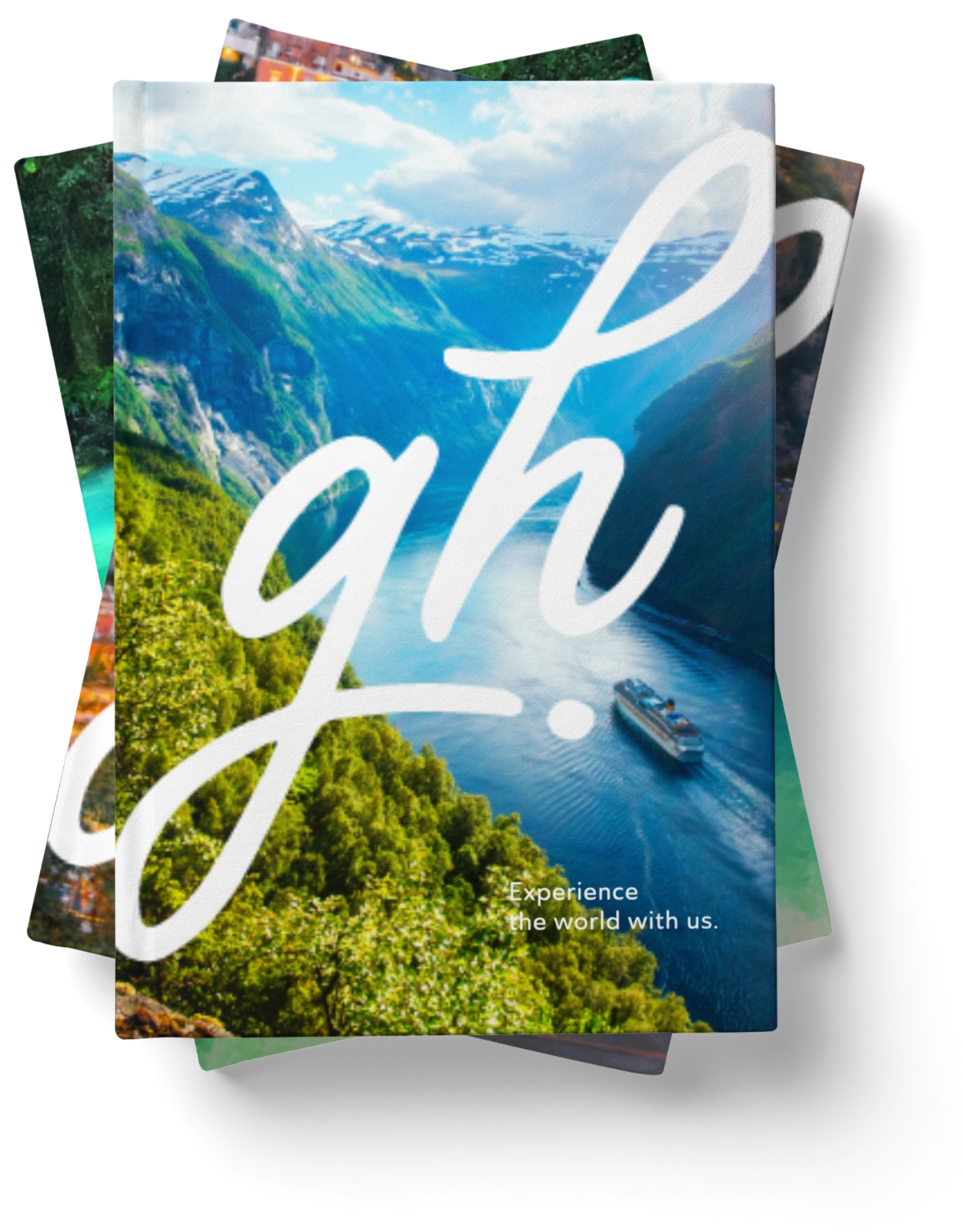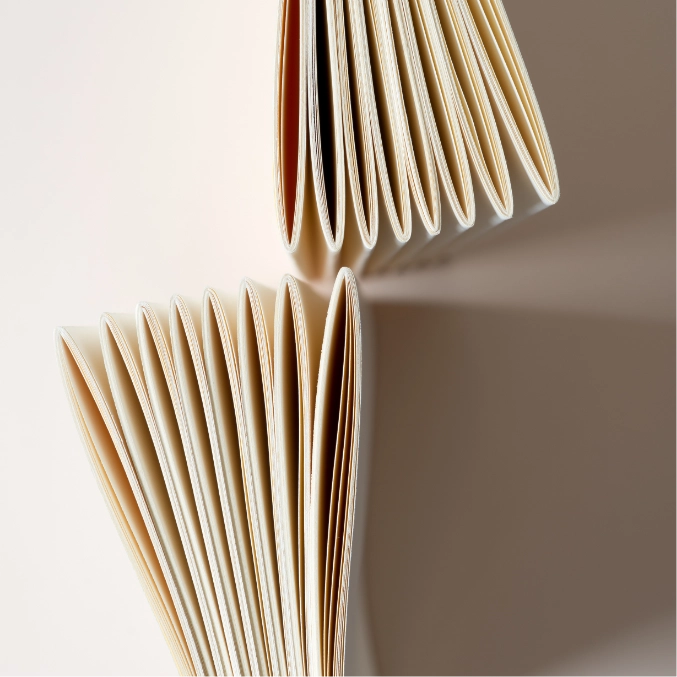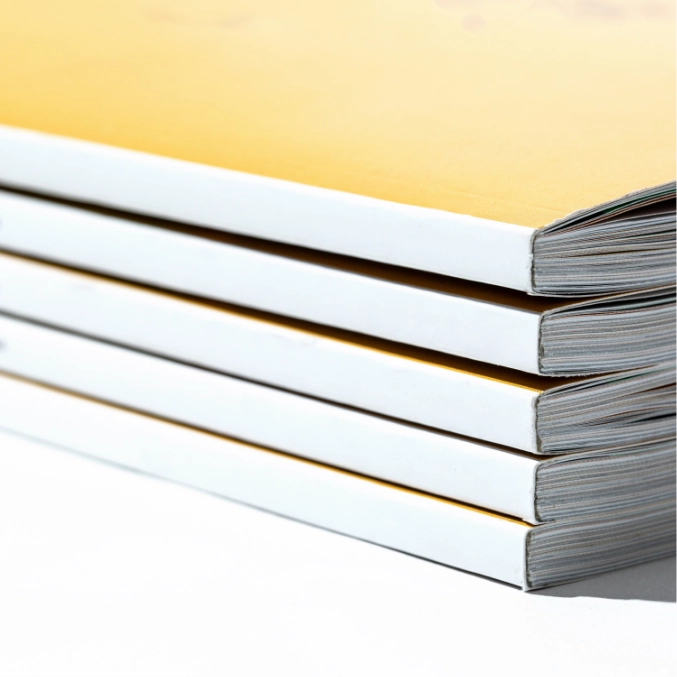Hard Cover Book
Print a more impactful publication with a sturdy and reliable hardcover book binding option.
We give our customers high-quality hardcover books, with various cover materials, finishes, and additional features like foil stamping or embossing, resulting in a professionally crafted product that meets their exact specifications.

about the binding Process
What is a Hardcover Book?
A hardcover book, also known as a hardback book or hardbound book, is a type of bookbinding where the book’s covers are made from a sturdy and rigid material, typically cardboard or chipboard, and covered with a durable material such as cloth, leather, or paper. The covers are attached to the book’s spine, protecting the pages within.
Here are some key features and characteristics of hardcover books:
- Sturdy construction: Hardcover books have a robust and solid construction that provides durability and protection for the pages inside. The rigid covers help safeguard the book from damage, such as tearing or bending.
- Spine reinforcement: The book’s spine is typically reinforced with additional materials, such as fabric or tape, to enhance its strength and prevent the pages from becoming loose or detached.
- High-quality appearance: Hardcover books are associated with a premium and professional look. The covers can be customized with various materials, finishes, and embossing techniques, making them visually appealing and suitable for special editions, gift books, or collector’s items.
- Long lasting binding: The hardcover binding method is designed to withstand regular use and handling. It offers greater longevity compared to other binding methods, making it suitable for books that will be read and referenced over an extended period.
- Page protection: The rigid covers provide protection against dust, light, and other external elements that may damage the pages. This makes hardcover books suitable for books with archival or valuable content.
- Printable covers: Hardcover books offer the opportunity to print and design custom covers. This includes printing the title, author’s name, artwork, or other relevant information directly on the cover material.
- Specialty features: Hardcover books allow for various design options, such as adding inserts, foldouts, or pockets. This flexibility allows for creative layouts and the inclusion of additional materials within the book’s structure.
Hardcover books are commonly used for novels, non-fiction books, reference books, textbooks, and special edition publications. They offer a premium and timeless feel and are often chosen when a book requires a more substantial and long-lasting presentation.
Is this option appropriate for my book
Why Choose Hard Cover?
Choosing a hardcover book binding has several advantages and may be the preferred option for various reasons. Here are some key reasons why you might choose a hardcover book:
- Durability and longevity: Hardcover books are built to last. The sturdy construction and rigid covers provide excellent protection for the pages, making them less susceptible to wear and tear. This durability ensures that the book can withstand repeated use and handling, allowing it to be enjoyed for a long time.
- Professional and premium appearance: Hardcover books are often associated with higher quality and a more prestigious look. The solid and well-crafted covers, combined with customizable printing options and finishes, lend a professional and premium aesthetic to the book. This makes hardcover books an excellent choice for special editions, collector’s items, or books that require an elevated presentation.
- Enhanced perceived value: A hardcover book conveys a sense of value and importance to the reader. The solid binding, premium materials, and overall design contribute to a perception of higher worth. This can make a significant impact on how the book is received and can increase its appeal for gifting or as a desirable addition to personal libraries.
- Protection for valuable or archival content: Hardcover books provide superior protection for valuable or archival content. The rigid covers guard against damage from external elements, such as dust, light, or physical stress, preserving the pages and ensuring the longevity of the book. This makes hardcover binding a suitable choice for books with historical, educational, or important reference material.
- Printable covers and customization options: Hardcover books offer a wide range of customization options. The covers can be printed with artwork, titles, author names, or any other relevant information. Additionally, various finishes, embossing, foil stamping, or special effects can be applied to enhance the book’s visual appeal and make it stand out.
- Versatility in design: Hardcover books allow for creative design possibilities. Inserts, foldouts, pockets, or additional materials can be integrated into the book’s structure, adding extra value and enhancing the reading experience. This versatility allows for innovative layouts and unique presentations.
Things to remember
What you Need to Know.
While hardcover books have numerous advantages, it’s important to consider factors such as production costs, printing quantity, and intended audience or purpose.
Hardcover binding is typically associated with higher production costs due to the materials used and the complexity of the binding process. Therefore, it is commonly employed for books with a higher perceived value or those where durability and a premium presentation are paramount.
Set yourself up Right
Set yourself up Right
Setting up design files for hardcover printing involves specific considerations to ensure a successful production process. What file do I supply? Today, most files are supplied as a PDF, alongside the native InDesign files.
Here’s a step-by-step guide:
- Determine the final trim size: Decide on the desired dimensions for your hardcover book. Common sizes include 6 x 9 inches, 8.5 x 11 inches, or other custom dimensions. Make sure your design document is set to the correct trim size.
- Set up margins and bleed: Determine the appropriate margin size for your content, keeping in mind the need for sufficient space between the text or images and the trim edge. Additionally, include a bleed area of typically 0.125 inches (3 mm) beyond the trim edge to account for any elements that extend beyond the page. Adjust your document’s margins and bleed settings accordingly.
- Organize page order: Arrange your pages in the correct reading order, ensuring they flow logically from start to finish. Consider front matter (title page, copyright page, etc.), table of contents, chapters, and any back matter (appendix, index, etc.). Confirm that your pages are properly sequenced and in the correct orientation.
- Design the cover: For hardcover printing, design the front cover, spine, and back cover as separate elements. Account for the spine width, which depends on the book’s page count and the paper thickness. Include relevant artwork, titles, author names, and any other necessary information on the cover.
- Account for safe zones: Ensure that important content, such as text or images, is kept within a safe zone away from the trim edge. This prevents the risk of crucial elements getting trimmed off during the production process.
- Convert fonts to outlines: To avoid font issues during printing, convert your text to outlines or embed the fonts within your design file. This ensures that the text remains intact and is displayed correctly, regardless of the fonts installed on the printing system.
- High-resolution images: Use high-resolution images (usually 300 dpi) to ensure crisp and clear reproduction. Avoid using low-resolution images that may appear pixelated or blurry when printed.
- Proofread and review: Before sending your files for printing, carefully proofread all text, check for any design inconsistencies or errors, and review the overall layout. It’s essential to ensure that your content is accurate, formatted correctly, and ready for printing.
It’s crucial to consult with your printer or production team for specific design guidelines and templates they may have for hardcover book printing. They can provide you with precise instructions tailored to their equipment and processes. Additionally, they can guide you on specific requirements, such as cover material choices, foil stamping, embossing, or any other customization options available for your hardcover book project.
Cost-Effective
Book Printing
With a wide range of economical options, you can print your publication without breaking your budget. Get a professional finished product, at the best price possible.
Large & Small
Scale Projects
Have a large corporate report or annual summary you need printed for your next conference or meeting? Print it with us, we do both small and large quantities.
Hassle Free
Coordination
Our top 6 features
What to consider when printing your hardcover book.
It is important to review your options and prepare your book properly for print. The type of book, orientation, page count, colour and/or black and white, and paper stocks are amoung the things to consider.
Firstly, choose your desired binding option hard cover based on your budget, quantity, and quality requirements. Paper type and weight influence the book’s feel and durability, so select them thoughtfully.
Choose the final colour and cover coating, while ensuring proper formatting and proofreading are in place to eliminate errors. Speak with our trusted professionals that can guide you through the process and options.
Book Orientation
Formatting
Choose your standard 8.5 x 11 book or specify the unique size.
Paper Type
Select a matte or silk finish for your paper type, or request a speciality paper.
Page Count
Outline the numbers of pages (each page in your pdf or each side of a sheet of paper). Blank pages are counted.
Colour
Coating
Consider the options for the cover lamination: coated gloss, coated silk or coated matte.
Hard Cover Price Comparison
Hardcover book printing is a cost effective printing method recommended for novels, non-fiction books, reference books, textbooks, and special edition publications. The cost can vary depending on the specifications and quantity needed. For a custom quote, click here to fill out the form and we will be happy to provide you with an estimate.
250 Hard Cover Books
$3,686
# of Pages: 128 + Cover
Size: Standard 8.5 x 11
Cover Stock: 100 lb Laminated
Paper Stock: 70 lb Text Stock
Colour: Full Colour or Black/White
Shipping: Heavy weight
Turnaround: 3 Weeks
Larger Quantities on Request
$4,010
# of Pages: 128 + Cover
Size: Standard 8.5 x 11
Cover Stock: 100 lb Laminated
Paper Stock: 70 lb Text Stock
Colour: Full Colour or Black/White
Shipping: Heavy weight
Turnaround: 3 Weeks
Larger Quantities on Request
1000 Hard Cover Books
$11,120
# of Pages: 128 + Cover
Size: Standard 8.5 x 11
Cover Stock: 100 lb Laminated
Paper Stock: 70 lb Text Stock
Colour: Full Colour or Black/White
Shipping: Heavy weight
Turnaround: 3 Weeks
Larger Quantities on Request
$15,320
# of Pages: 128 + Cover
Size: Standard 8.5 x 11
Cover Stock: 100 lb Laminated
Paper Stock: 70 lb Text Stock
Colour: Full Colour or Black/White
Shipping: Heavy weight
Turnaround: 3 Weeks
Larger Quantities on Request

Looking for a Custom Quote for your book?
For a custom quote fill out our form below and we will be happy to provide you with an estimate.
Note: Costs are estimated in Canadian Dollars. All estimates are for budget planning purposes only, final costs will be updated to reflect changed specifications once quoted on. Turnaround time is based on final print proof approvals. Courier charges and taxes are not included. For clients in the United States, all books are shipped from Canada, no Canadian taxes will apply.
Mirian Moreno, Metals Focus
They listen to my needs and provide solutions meeting all of the deliverables I put before them. Honesty and integrity in all dealings with them has kept me as a loyal customer.
Bert Steenburgh, Executive Coaching
Neil Phillips, DGN Marketing Services Ltd.
Geoffrey Johnson, EnVille
Get the assistance you need
Looking for help with your Custom Hardcover Book?
Leave it to us to determine the best printing method, book style, paper quality and setup for your unique book. Our experts are happy to help and suggest a variety of options for your next catalogue, annual report, magazine or booklet. Get more out of your book printing today.
- High Quality Offset & Digital Printing
- Colour & Black / White Printing
- Variety of Paper Choices
- 360° File Inspection
- Competitive Pricing
- Fast Turn Around Time
Quote your Hard Cover Book Today
Please note we only fulfill minimum orders of 20 books.
Alternative Types of Book Printing

Saddle Stitch Book
Turn your report into a saddle stitch book.
Saddle stitch is the most popular and cost-effective binding method for small booklets.

Perfect Bound Book
The perfect high-end feel to your corporate catalogue.

Coil Bound Book
Looking for book flexibility? Coil bound is what you need.
The versatile book printing option for documents that need to lay flat when opened.